Detailed introduction of the University of Rostock:
Introduction
The University of Rostock is the oldest university on the Baltic Sea coast and the third oldest university in Germany. It was founded in 1419 and has a history of nearly 600 years. It is located in Rostock, Mecklenburg-Vorpommern. The campus is integrated with the city. It is one of the top 500 universities in the world and was selected by Fodors as one of the 15 most beautiful universities in the world.
Overview
Student size: There are currently about 14,000 students.
Number of faculty and staff: 2,933 staff members, including 2,926 in the healthcare department.
Professional courses: There are ten colleges and more than 70 professional settings, providing students with more than 100 learning courses, including 34 bachelor's programs, 50 master's programs, more than 30 teacher training courses, and multiple national examinations and doctoral programs. In addition, it also provides on-the-job master correspondence courses in environmental protection, education and sustainability, media and education, technical communication, etc., as well as certificates and online courses.
History
In 1419, Pope Martin V By the encyclical signed on February 13, Duke John III of Mecklenburg and Albrecht V, together with the city council of the Hanseatic city of Rostock, founded the University of Rostock. The opening ceremony was held on November 12 at the Church of St. Maria. The university was originally composed of the Faculty of Law, the Faculty of Medicine and the Faculty of Arts. The Faculty of Theology was not established until 1432 with the permission of Pope Eugene IV.
In the 15th century, there were 400 to 500 students studying at the University of Rostock, which was among the large universities at that time.
In 1622, Joachim Jungjou founded the first natural science research society in Germany at the University of Rostock.
In 1899, the first university-affiliated ENT hospital in Germany was opened.
In 1919, on the occasion of the 500th anniversary of the founding of the university, honorary doctorates were awarded to Albert Einstein and Max Planck.
In 1951 In 1915, the Shipbuilding Department was established and later renamed the Institute of Technology. It was the first engineering department set up by a classical German university. In the same year, the Engineering Economics Department was added.
In 1976, the university was renamed Wilhelm Pieck University until the unification of Germany in 1990 when the original name was restored.
Founding time
1419.
School strength
Discipline and major: It has strong interdisciplinary research strength in natural sciences, engineering, medicine, life sciences, and humanities and social sciences, covering astronomy, civil engineering, business economics, biology, business informatics, chemistry and many other majors.
Scientific research results: It has cultivated many outstanding talents, such as Tycho Brahe, Moritz Schlick, Rudolf Steiner, etc., who have made important contributions in their respective fields.
Nature of the institution
German public university.
Education philosophy
Inheritance and innovation, with nearly 600 Based on years of knowledge and experience, we focus on interdisciplinary research, cultivate students' ability to cope with various future topics and challenges, and are committed to innovating in tradition and creating glory with action.
Key laboratories and disciplines
Key laboratories: The University of Rostock has many advanced scientific research laboratories, which provide important experimental platforms for research in various disciplines, but no clear information on specific key laboratories has been found.
Key disciplines: The medical profession is strong, and its natural science disciplines such as physics and chemistry, as well as social science disciplines such as economics and law, are also very strong, and have achieved fruitful results in teaching and scientific research.
Faculty
The University of Rostock has ten colleges, including the College of Agricultural and Environmental Sciences, the College of Computer Science and Electronic Engineering, the School of Law, the School of Mechanical Engineering and Naval Technology, the School of Mathematics and Natural Sciences, the School of Humanities, the School of Theology, the School of Medicine, the School of Economics and Social Sciences, and the School of Interdisciplinary Studies.
Ranking
2024 QS World University Rankings: 761-770.
Urap World University Rankings: 375.
Ntu World University Rankings: 393.
Shanghai Jiaotong University Academic Ranking of World Universities (arwu): 401-500.
Cwur World University Rankings: 428.
Thomson Reuters Europe's Most Innovative Universities Ranking: 91 (24th in Germany).
Expenses
All public universities in Germany have been ranked 100th since 2010. Although tuition fees were charged after 2000, the University of Rostock still maintains the tradition of not charging tuition fees, and international students do not need to pay tuition fees.
Campus
Location and environment: Located in Rostock, northern Germany, the city is one of the three major port cities on the Baltic Sea coast of Germany and the economic and scientific center of Mecklenburg-Vorpommern. The campus is integrated with the city, and students can make full use of the city's resources and facilities.
Facilities: The University Library of Rostock was built in 1569, including three regional libraries, ten professional libraries, university archives, storage rooms, patents and standards centers, with a collection of about 2.2 million books and many ancient books. The South City Canteen is the main canteen of the University of Rostock. It is located on Albert Einstein Street and was newly built in 1999. It ranked first in Germany in the evaluation of the student magazine "unicum". In addition, the school also has modern buildings such as the new natural science campus, providing students with a good learning and living environment.
-
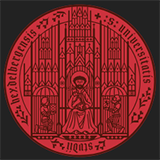
Heidelberg University
-
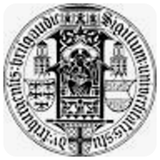
University of Freiburg
-
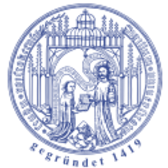
University of Rostock
-
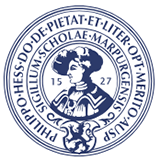
University of Marburg
-
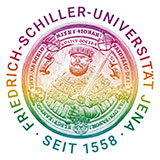
University of Jena
-
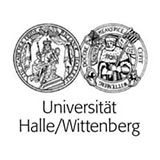
University of Halle-Wittenberg
-

University of Bayreuth
-

Leipzig University
-

University of Tübingen
-
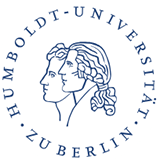
Humboldt University of Berlin
-

Mesoamerican University
-

Istmo University
-

Mariano Galvez University of Guatemala
-

Regional University of Guatemala
-

Galileo University
-

Francisco Marroquín University
-

Rafael Landívar University
-

University of the Valley of Guatemala
-

University of San Carlos of Guatemala
-

Technological Institute of Tlaxcala Plateau
-

Golfo University
-

Technological University of South Sonora
-

Technological University of Huejotzingo
-

Tizimín Institute of Technology
-

Chilpancingo Institute of Technology
